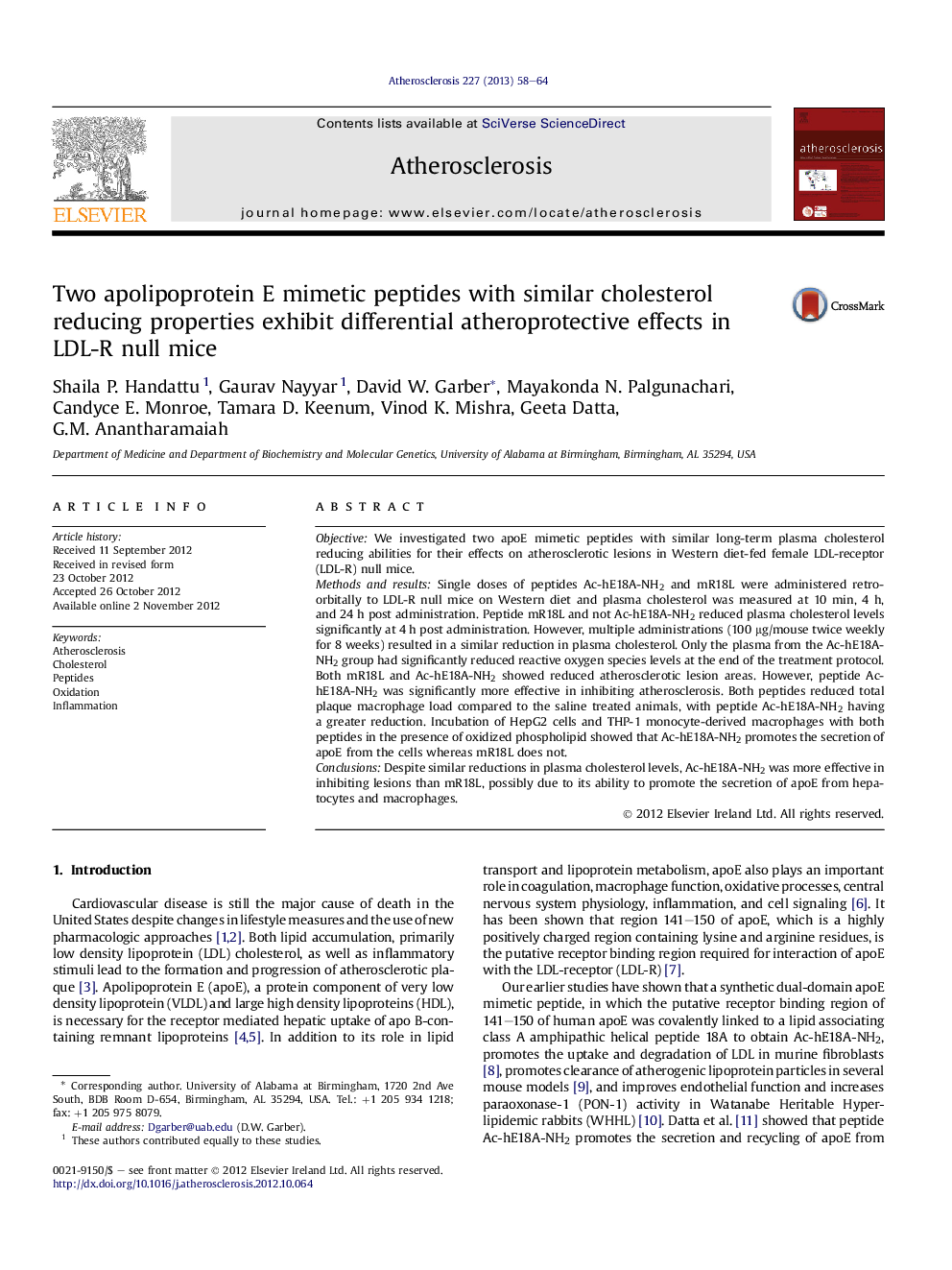| Article ID | Journal | Published Year | Pages | File Type |
|---|---|---|---|---|
| 5947116 | Atherosclerosis | 2013 | 7 Pages |
ObjectiveWe investigated two apoE mimetic peptides with similar long-term plasma cholesterol reducing abilities for their effects on atherosclerotic lesions in Western diet-fed female LDL-receptor (LDL-R) null mice.Methods and resultsSingle doses of peptides Ac-hE18A-NH2 and mR18L were administered retro-orbitally to LDL-R null mice on Western diet and plasma cholesterol was measured at 10 min, 4 h, and 24 h post administration. Peptide mR18L and not Ac-hE18A-NH2 reduced plasma cholesterol levels significantly at 4 h post administration. However, multiple administrations (100 μg/mouse twice weekly for 8 weeks) resulted in a similar reduction in plasma cholesterol. Only the plasma from the Ac-hE18A-NH2 group had significantly reduced reactive oxygen species levels at the end of the treatment protocol. Both mR18L and Ac-hE18A-NH2 showed reduced atherosclerotic lesion areas. However, peptide Ac-hE18A-NH2 was significantly more effective in inhibiting atherosclerosis. Both peptides reduced total plaque macrophage load compared to the saline treated animals, with peptide Ac-hE18A-NH2 having a greater reduction. Incubation of HepG2 cells and THP-1 monocyte-derived macrophages with both peptides in the presence of oxidized phospholipid showed that Ac-hE18A-NH2 promotes the secretion of apoE from the cells whereas mR18L does not.ConclusionsDespite similar reductions in plasma cholesterol levels, Ac-hE18A-NH2 was more effective in inhibiting lesions than mR18L, possibly due to its ability to promote the secretion of apoE from hepatocytes and macrophages.
⺠ApoE mimetic peptides Ac-hE18A-NH2 and mR18L were studied in LDL-R null mice. ⺠Chronic treatment of both peptides reduced cholesterol levels to the same extent. ⺠Ac-hE18A-NH2 and not mR18L reduced plasma reactive oxygen species. ⺠While both peptides reduced atherosclerosis, Ac-hE18A-NH2 was more effective. ⺠Ac-hE18A-NH2 increased in vitro apoE secretion in the presence of ox-lipid.
